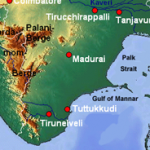Gulf of Mannar Marine National Park
Located in the southernmost part of India, the Gulf of Mannar Marine National Park (GoMMNP) is a protected area covering an area of around 560 square kilometers. The park includes a group of 21 islands situated in the Gulf of Mannar, Tamil Nadu. The area was declared a marine national park in 1980 and later included in the Gulf of Mannar Biosphere Reserve (GoMBR) in 1989.
Invasive Plant Species Threatening the Vegetation
The vegetation in the GoMMNP is threatened by an invasive plant species called Prosopis chilensis. This plant species is native to Argentina, Bolivia, Chile, and Peru. It is known for its ability to spread rapidly, forming dense thickets that can displace native plant species. Another invasive plant species, Prosopis juliflora, was introduced in Tamil Nadu by the British in 1877, which is equally threatening to the natural vegetation of the area.
Bird Species in the Gulf of Mannar
A study conducted in the Gulf of Mannar recorded 96 bird species belonging to 13 orders. Out of these, 58 were waterbird species, indicating the importance of the area for these birds. The highest number of waterbird species was recorded on Manoli island of the Kilakkarai group. Eight bird species were found on all the islands, including Kentish plover, ruddy turnstone, lesser black-backed gull, greater crested tern, little cormorant, great egret, Indian pond heron, and Brahminy kite.
Unique Ecosystems on the Islands
The Gulf of Mannar Marine National Park is home to three unique ecosystems, including corals, seagrass, and mangroves. The coral reefs in the area are some of the healthiest in the world and provide a habitat for numerous marine species. Seagrass beds are also essential for marine life, serving as breeding grounds for fish and other organisms. Mangroves, on the other hand, provide a habitat for a variety of bird and animal species and protect the coastline from erosion and storms.
The Significance of the 21 Islands
The 21 islands in the GoMMNP serve as resting places for birds migrating to and from the nearby Sri Lankan islands. These islands provide a critical habitat for these birds to rest and refuel during their long journey. The area is also important for the local communities who rely on the park’s resources for their livelihoods.
Month: Current Affairs – April, 2023
Category: Places in News Current Affairs


